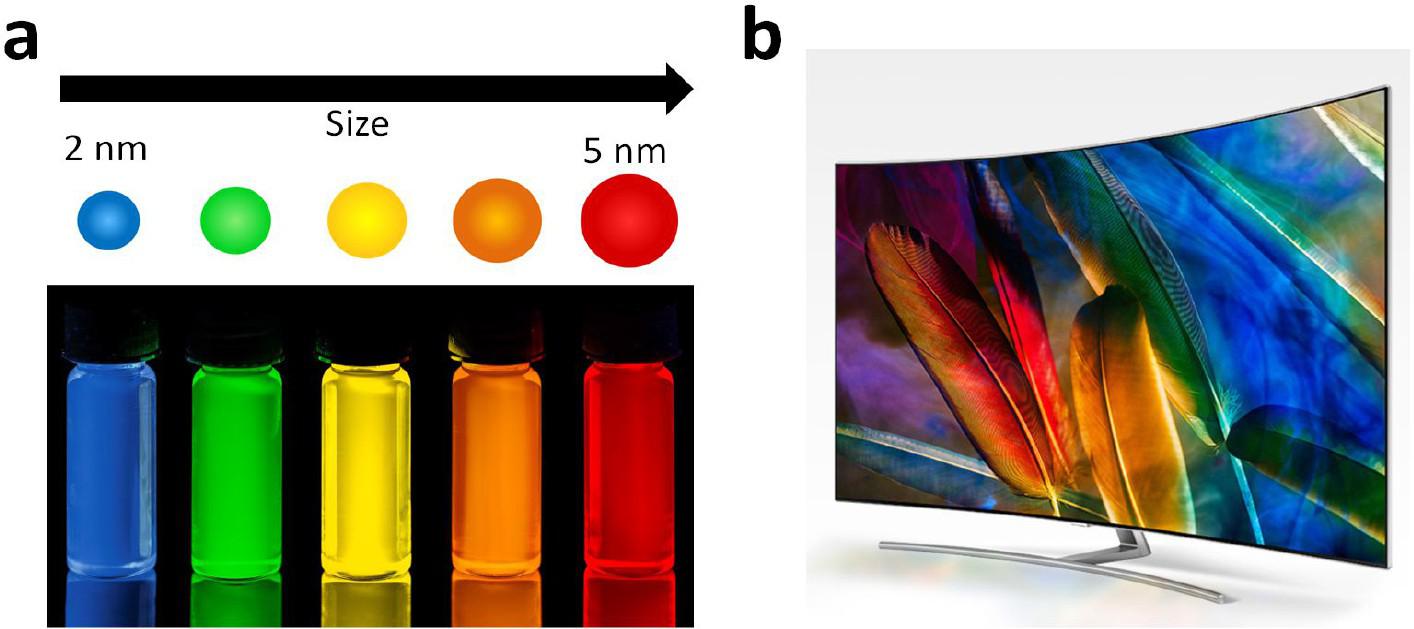Séminaire : Innovative Colloidal Nanostructures: Nanoplatelets and III-V Quantum Dots
Dr Mickaël Tessier
Ghent university, BelgiumMercredi 17 avril 2018 à 14h00
IEMN Salle du conseil – Villeneuve d’Ascq
Abstract :
Innovative Colloidal Nanostructures: Nanoplatelets and III-V Quantum Dots
Colloidal Quantum Dots (QDs) are semiconductor nanocrystals in the 1 to 10 nm size range synthesized by wet chemistry process. Because of these small sizes, QDs are subject to quantum-size effect. This effect leads to discrete transitions, much like in an atom or a molecule, with energies higher than the bulk and that are strongly dependent of the QDs sizes. This property has allowed QDs to emerge as a novel class of optoelectronic materials over the last 25 years. The most advanced application of colloidal QDs, at least from a research valorization perspective, is their commercial use in liquid crystal displays (LCDs). First launched in 2013, sales of QDs-enhanced LCDs are expected to achieve 18 million units in 2018.
a. Vials containing QDs of different sizes under UV light. The emitted color depends of the QDs sizes. b. Commercial QDs display (http://www.samsung.com/global/tv/).
Significant advances have been made in the synthesis of QDs since the beginning of the 1990s. The shape of the nanoparticles can now be finely controlled, and nanoparticles with various shapes have been synthesized. In particular, colloidal nanoplatelets are atomically flat nanostructures that present only one dimension of quantum confinement.1In this lecture, I first present how the nanoplateletssizeand composition can be perfectly controlled via inventive synthesis protocols and how theseparameters affects the nanoplatelets optical properties.(2–4)
To facilitate the use of nanocrystals in the industry, interest is shifting from the well-characterized cadmium-based QDs to cadmium-free alternatives such as indium phosphide. We recently proposed protocols based onaminophosphine-type precursors that allow for a cost efficient, up-scaled syntheses of indium phosphide(InP) QDs of different sizes.(5) A detailed understanding of the reaction chemistry is a key in the development of colloidal QDs synthesis. I present an investigation of chemical reactions leading to the formation of InP starting from aminophosphine-type precursors.(6) This mechanism is innovative in the sense that it points out a double role of the phosphorus precursor in the reaction as both a reducing agent and the source of the phosphorus needed to form InP. Its understanding furthers the general use of aminopnictogens for the
synthesis of III-V QDs.(7) Finally, I show that InP QDs can be processed in polymer layer and that their structure can be optimized in order to obtain more efficient and cheaper lighting devices.(8)
References
(1) Ithurria, S.; Tessier, M. D.; Mahler, B.; Lobo, R. P. S. M.; Dubertret, B.; Efros, A. L. Nat. Mater.2011, 10, 936–941.
(2) Tessier, M. D.; Mahler, B.; Nadal, B.; Heuclin, H.; Pedetti, S.; Dubertret, B. Nano Lett.2013, 13, 3321–3328.
(3) Tessier, M. D.; Spinicelli, P.; Dupont, D.; Patriarche, G.; Ithurria, S.; Dubertret, B. Nano Lett.2014, 14, 207–213.
(4) Tessier, M. D.; Javaux, C.; Maksimovic, I.; Loriette, V.; Dubertret, B. ACS Nano2012, 6, 6751–6758.
(5) Tessier, M. D.; Dupont, D.; De Nolf, K.; De Roo, J.; Hens, Z. Chem. Mater.2015, 27, 4893–4898.
(6) Tessier, M. D.; De Nolf, K.; Dupont, D.; Sinnaeve, D.; De Roo, J.; Hens, Z. J. Am. Chem. Soc.2016, 138, 5923–5929.
(7) Grigel, V.; Dupont, D.; De Nolf, K.; Hens, Z.; Tessier, M. D. J. Am. Chem. Soc.2016, 138, 13485–13488.
(8) Dupont, D.; Tessier, M. D.; Smet, P. F.; Hens, Z. Adv. Mater.2017, 29, 1700686.

















